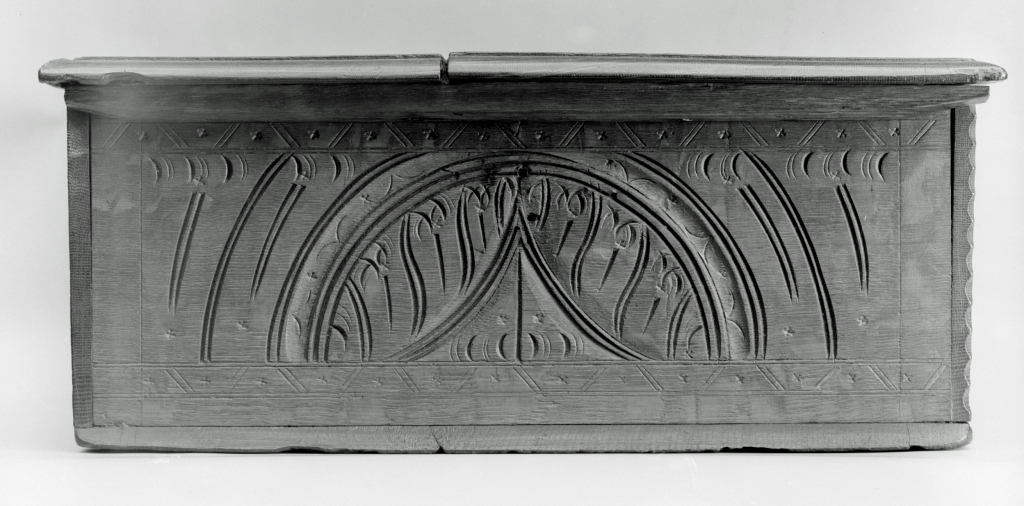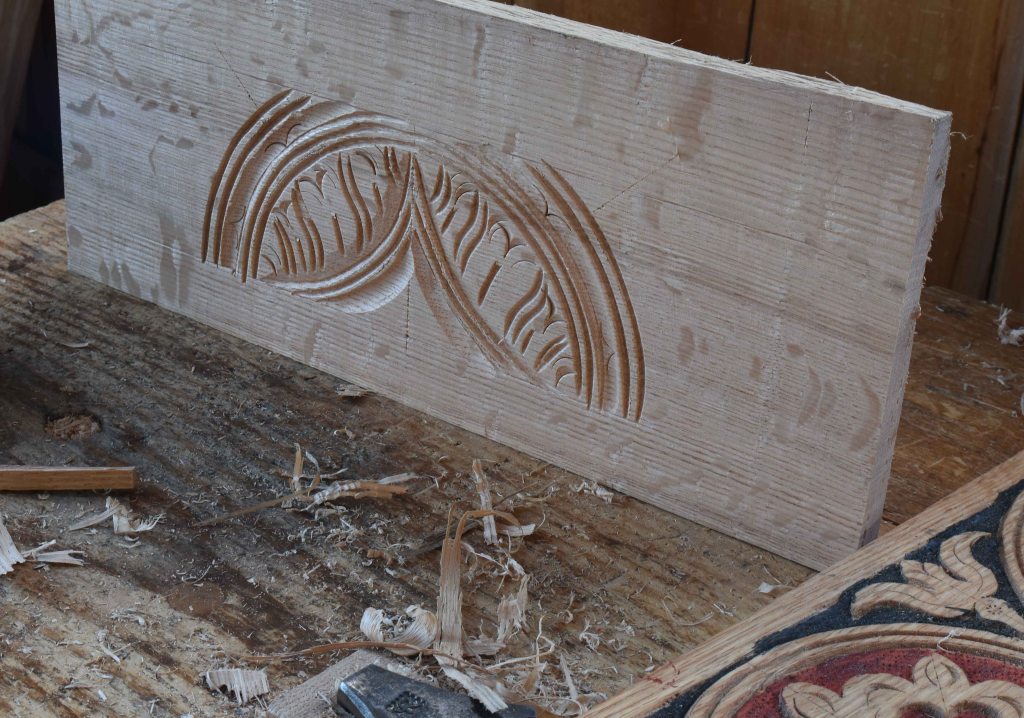I’m about to go out on my 2nd teaching gig in the past 2-plus years. Carved box class at Lost Art Press. I’ve spent a chunk of today sorting reference material and other junk for the trip. I’ve looked at a lot of box-photos today. I have a folder here that includes photos of over 109 boxes I’ve made, but I know there’s lots that got away sans-photos. (there’s 109 sub-folders, but some have more than one box in them.)
The carving above is copied from two boxes I’ve seen that were made in Braintree, Massachusetts c. 1660-1690. I have carved this design many times over the years. I tend to look closely at the originals as I learn a pattern, then once I feel I know it – I just go ahead and carve it. But I found out lately it’s good to go back & review the source material. Turns out I’ve done the layout wrong for ages.
I got it in my head that those inner arcs swept all the way out to the edges of the half-circle down at the bottom margin. (they mostly do on one other example) And often wondered why I had a hard time fitting all the detail inside the pattern! I fiddled around with the photo and a compass this morning – I’d go carve one but my tools are packed already. I used to strike a 45-degree line from the bottom center to locate the new centerpoint for the upside-down arcs. But now I think that centerpoint is not on a diagonal line, but just off it, tucked up under the top margin. Leaves more room inside.
These joiners, William Savell and his sons John and William – always made lunettes with concave outlines – what Jennie Alexander called a “marble run.” But it never continued over the top of the design – it’s always broken. Here’s two examples, the front of a chest:
and the front of a box
We often wondered where are the English examples that are the source for this work? The closest I have come is a tossed-off Instagram post showing something like their work – so a poor photo, grabbed from IG and cropped heavily. (I wrote to the antiques dealer whose photo it is & never heard back.)

But it has all the earmarks of the Savell/Braintree work –
- Broken concave outline
- Alternating upside-down/right-side-up V-shapes in that outline (seagulls)
- Punched decoration – in the New England work a Maltese cross. Too indistinct to see here.
- Alternating light & heavy chopped decoration with a gouge.
Many of these things happen in other 17th century carvings too, but combining them this way leads me to think there’s a connection. This detail from one of the New England chests shows some of those bullet points –
But the design between the lunettes on the English piece? What about that? It shows up on one of the New England chests – and a box too.
Well. It gives me something to think about while I drive from here to Lost Art Press. I’ll be making carvings of these lunettes as part of the joined chest I have underway – they’ll appear here on the blog and on the video series about the chest. But next post in both those places won’t be til the end of the first week of April.







































